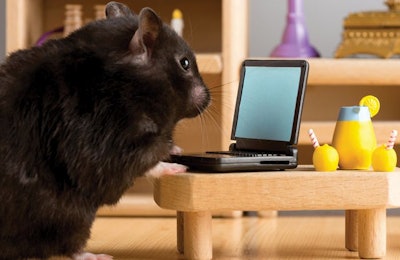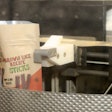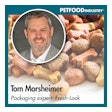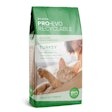
The rise of e-commerce in the pet food space has provided an additional, sometimes challenging avenue for marketing. Petfood Industry spoke with Stefan Hartung, co-founder and head of creative for Kick, a Minneapolis, Minnesota, USA-based brand strategy, branding and design agency, to get some insight on how the digital space is changing the game and what companies can do to make the most of it.
- How has the digital space changed the way we need to look at product marketing?
“I think it all goes back to the omnichannel product offerings that companies have to go through. If you think about [it], consumer behavior changed in terms of where they’re buying and how they’re buying, and that changed the way we have to do marketing.
“I think back to ten years ago, before we had to do social media, people were slowly starting to buy things online. Today, through social media, people are much more aware of what is happening in the pet food space. They’re discussing things that are happening, whether that’s a recall or an ingredient question or formula changes. And I think that being able to respond to that on packaging, in marketing, is a huge aspect that people in the industry have to pay attention to. I think it’s incredibly complicated, and you have to be fast, you have to be nimble and you have to anticipate things because any changes will affect how you’re coming across to your audience.”
- What are some of the top packaging considerations when marketing a product online?
“I think my ‘ah ha’ moment for myself was when I started to get these tiny little ads on my phone from Amazon Prime. The good thing that they do is they’re really targeting what I’m interested in — I get a lot of pet food ads. What they don’t discriminate about is they just put the front face of the packaging in the feed. It’s just so tiny that a lot of times you don’t even see what it is.
“That was my moment where I went, okay, any kind of packaging that gets put in an automated advertising feed has to work even harder and even stronger to be seen. What was always a strong strategy of having the packaging engage first and then communicate and then reinforce the buying behaviors of consumers, I think that has switched a bit. You still have to engage but you also have to scream something very loudly about the brand in a tiny space.”
- How can companies maximize the space they're given online to sell their products?
“One of the things a lot of companies don’t utilize is the extra space that the online retailers give them. There are so many extra spaces where you can put information out there for the consumer — you can put more imagery out there and you can really tell your brand story more clearly, stronger and more effectively. The key thing to success is that you actually have a very succinct, strong brand story.
“Designing something new and different is easy. Naming a new brand that means something is really, really hard. Coming up with a brand story, or dipping into a band and how it’s different from other brands, is the hardest thing. ‘I started this brand because I have this dog and I love them so much, so I made this food,’ that’s out there a hundred times. What is the differentiator you can bring to the market? Telling it again and again, in may facets, that helps. And if you can have your audience on social media repeat that story and tap into that, then you have a winner because you know your core audience, your growth audiences, are feeding that entire thing back, making your brand story stronger because they’re telling it and you’re telling it.
“Some clients really get that — they are ready to tell a story. Sometimes you just have to dig in and find that story. They might not realize that they actually have something really good; then you just have to put a little money behind it. Something good about the brand story is that you can put it everywhere. The advantage of people going online and shopping: research shows they’re not just looking at the front or sides of the bag, they look at the brand story. They look at the guaranteed analysis and the ingredients, because they’re curious. They will go in and read, analyze and compare to other products, because they’re just as aware of what they put in their animals’ bodies as what they’re putting in their own bodies.”
- What advantages does pet food packaging have over other industries’ packaging?
“Here’s an interesting observation. Pet food is just kind of ugly. It’s kibbles, it’s flakes, it’s brown things that sometimes smell good but don’t look great. So nobody really uses just the form of what they have as part of their marketing online, unless it’s a treat or a chew. Pet food always has to play different things up in packaging.
“But if I go to other products, that’s not the case. Say I buy an iPhone. You wouldn’t look at the packaging to judge what you’re buying, you’d look at the phone itself. Pet food always has that advantage or disadvantage to be in a package. I say it’s an advantage, because it gives you the opportunity to tell the story purposefully, versus showing your product the way it comes out of the extruder.”
Read the full companion article, "Sustainability a top concern in small pet food packaging,” published in the September 2019 issue of Petfood Industry magazine.


















